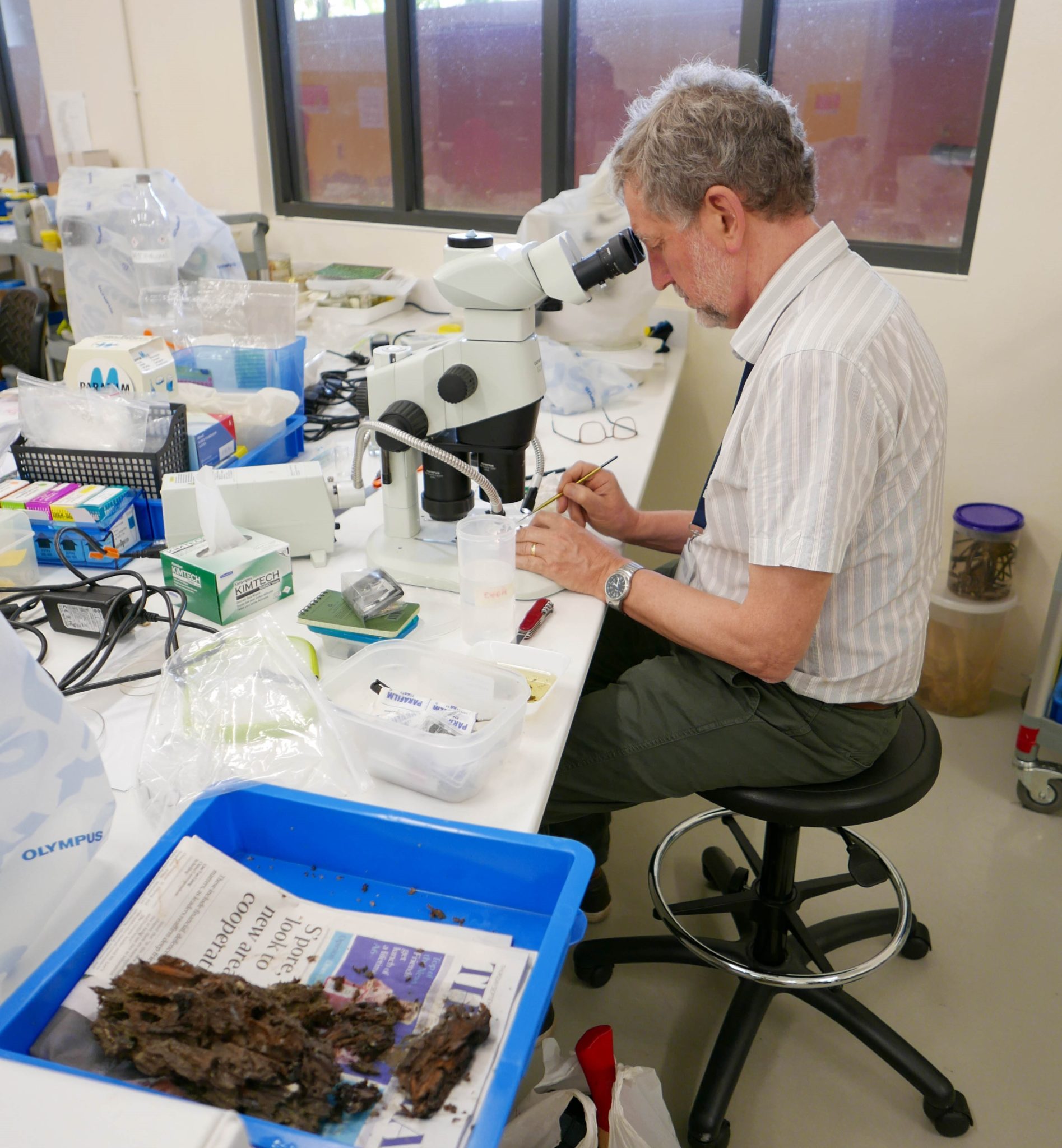News //
Today’s feature is on Dr. Simon Cragg, a Professor of Marine Zoology from the University of Portsmouth. Dr. Cragg is currently on sabbatical leave, and has spent the last four months here at LKCNHM working on marine wood borers.


Marine wood borers are marine animals (such as crustaceans and molluscs) that live in, and consume wood. They can cause massive damage to wooden boats and other wooden structures in marine areas, by boring ‘tunnels’ through the wood and destroying their underlying foundation.
Accidentally in Love
Dr. Cragg has been doing research on marine wood borers for 40 years, but he actually started off studying scallops. He “accidentally stumbled” into studying marine wood borers after he took up a job opportunity to go to Papua New Guinea to study the little critters.
“It gave me a job!” he said with a laugh.
Dr. Cragg grew to love studying marine wood borers, and his research takes him places far and wide—such as our sunny little island.
He was here to conduct research for a review article on the ecosystem of mangroves, examining the way marine wood borers break down wood, as well as the potential to convert this “woody waste” into biofuel.
Marine Adventures
During his four months here, Dr. Cragg went to places such as Pulau Ubin, Pulau Hantu and Labrador Park for fieldwork. At these places, he collected pieces of dead wood and brought them back to LKCNHM for further examination under the microscope, and meticulously picked out the marine wood borers living inside.
Recently, he discovered two species of shipworms from the family Teredinidae (Bivalvia), Bactronophorus thoracites and Dicyathifer mannii, in live wood. This is a really uncommon phenomenon, as they reside in dead wood most of the time. The shipworms were also unusually large, and what seemed like mud was found in their abdomens.
Not much is known about these shipworms, and there is not a lot of scientific literature written about them.
“I had to look at a book from all the way back in 1966 just to find a picture of them,” said Dr. Cragg.
He added that there are a few guesses to the questions he has about the shipworms, but more research has to be done to unravel this mystery.
A Rewarding Sojourn
It’s not Dr. Cragg’s first visit to Singapore, although it is his first time visiting LKCNHM. During his previous visit to Singapore in 1985, he met the head of the museum, Prof. Peter Ng, when he was still a PhD student.
During this visit, Dr. Cragg has had many “fruitful interactions” with people from LKCNHM, as well as the Department of Biological Sciences and the Department of Geography.
“I really like the way the people here do science,” he said.
“They really respect the subject and are stimulating people to work with.”
In addition, he also met many interesting people from outside the region during his visit, such as a young Finnish scientist based in Indonesia, who is also working on mangroves. They met in NUS and discussed a potential research collaboration with local Singaporean scientists.
“Singapore is enroute to many places, and interesting people travel through,” said Dr. Cragg.
He also recounted two occasions that stood out to him during his visit—one being the launch of LKCNHM’s new exhibition, Christmas Island Red, and the other being the first anniversary of the opening of the Tropical Marine Science Institute’s St. John’s Island National Marine Laboratory.
During the former, he said that he was intrigued by the “really interesting” exhibits, and praised the museum’s efforts in reaching out to the public. As for the latter, he said that it really opened his eyes to the range of science and research done at the marine laboratory.
Although Dr. Cragg will be leaving after a rewarding four-month stay, his work does not end here. He mentioned that there will be ongoing and future research collaborations with the people he has met here.
He also added that he was very grateful for the support he has gotten for his research, and would like to come back again.
“I’ve come away with so many positive things, so much so that I regret to leave,” he said.